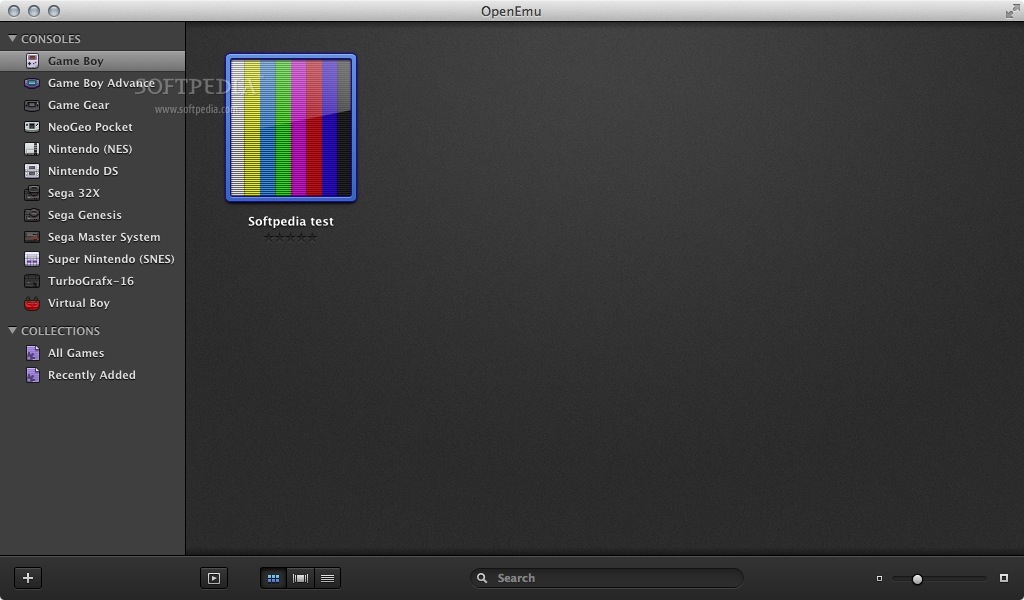

Libretro Vulkan (.slang) shaders repository (forked from Vulkan (.OpenEmu (formerly called OpenNestopia) is a free and open-source multiple systems universal game console emulator only for Mac OS. Libretro GLSL shaders conversion repository Can be combined with NTSC filters/shaders for maximum authenticity, check out the shader presets in /cgp/tvout and /cgp/tvout+interlacing for some examples. The higher horizontal resolution will make it look natural and convincing, avoiding banding issues. The signal resolution blur works best if you use a large horizontal resolution (1280 or higher recommended) while keeping your vertical resolution at 240 or 480, and setting the aspect ratio of the emulator to stretch to fit.
Openemu filters 480p#
Both of these allow you to have adjustable signal resolution blur applied horizontally, as well as color controls like gamma, saturation, and the option to use TV color range (16-235) instead of PC color range (0-255), while the 480p version provides a scanline shader that is interlaced on 480-line content.
Openemu filters 240p#
You can combine those things with these two shader presets: tvout.cgp for 240p and tvout+interlacing.cgp for 480p. In these cases, you should use shaders that are applied only on the horizontal axis, only make changes to color output without scaling, or those that add scanlines/interlacing for 480p output. However, CRT monitors (and 15kHz CRTs) displaying in low-resolution modes like 240p or 480p, you will find many of them won't work correctly due to the low output resolution. On 31+kHz PC CRT monitors displaying in high-resolution modes, most filters/shaders should work fine as is, as most were intended for output scaled 3x or higher. When the modified LUT is used in the shader, the color adjustment gets applied to the game's video output.
Openemu filters software#
The LUT texture is PNG image that can be edited in any image editing software to have the desired color adjustment.

There are also shaders that simulate the color profiles of specific displays, such as the GBA or DS.Ī tone mapping shader allows you to use an external LUT texture to do tone mapping and other color adjustments. Often, these are used alongside other shaders. Image adjustment shaders allow you to adjust the color levels of an image, including gamma, luminance, contrast, saturation, and so on, for personal preference, accuracy, or compensating your display. Can be used to fill empty areas on widescreen monitors with artwork, display a CRT or handheld bezel, or simulate Game Boy Player and Super Game Boy output. A newer alternative that does the same thing (but may give sharper results) is the sharp-bilinear shader, which prescales the image to a high resolution, then downscales using bilinear scaling.Ī shader that applies a border overlay to the game image. Available in Quark and Cg shader formats. This shader is useful to anyone who wants to keep things as sharp as possible without worrying about scale factors. This shader is supposed to appear the same as the nearest neighbor (aka "unfiltered"), except with minor corrections when using a non-integer scale that is increasingly less noticeable the higher it is scaled. These are shaders designed to detect and smooth dithering. They can cause a lot of false positives and distortions, however, scaling the image 2x or 3x using nearest neighbor, then applying the smoothing shader will reduce the intensity of the smoothing by keeping the pixel shapes intact, eliminating most distortions while keeping a fairly smooth look. These shaders, such as 2xSai, Super Eagle, Super 2xSai, scaleX, HQx, xBR and xBRZ attempt to reduce the pixelation by smoothing and rounding. cgp shader replicates the dot matrix screen of a Game Boy, complete with the ghosting problems to reproduce certain visual effects. Types Main article: List of shaders and filters of cgp - possible to stack several shaders with this. GLSL is the shader language used by default on mobile (Android/iOS/Blackberry). Must be named shader.fx and be in the main directory. Slangp support coming soon with a new Metal rendering engine filter works in old bsnes versions (circa v082) but not current in current versions of higan. shader removed in future higan releases in favor of Quark shader folders.

SoftFilters are dynamic libraries, the extension depends on the platform. Old bsnes XML shaders (.shader) and old bsnes filter plugins (.filter) are no longer usable in current versions of RetroArch.


 0 kommentar(er)
0 kommentar(er)
